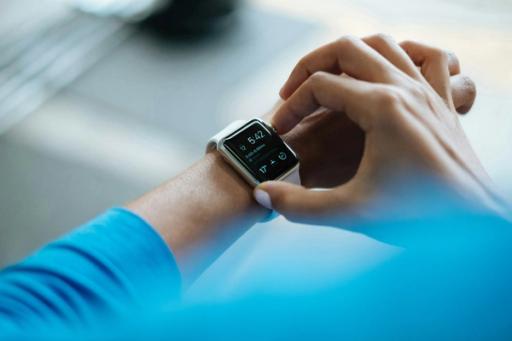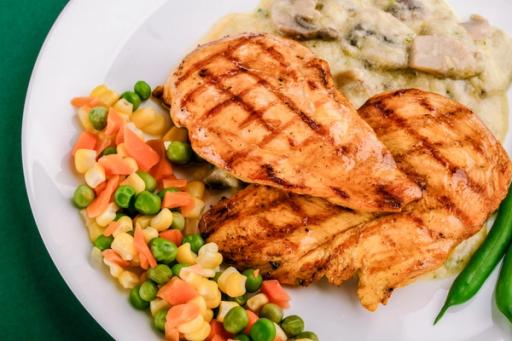
Have you ever enjoyed a delicious meal at a restaurant only to feel guilty afterward? Eating out can be stressful if you’re watching your weight and counting calories. You're often unsure what's in the foods you choose or how to make the healthiest selections. Learning. How are Calories Measured? When Eating Out can help you enjoy dining out without guilt or stress. This article will help you make calorie-conscious choices that support your health and fitness goals—without feeling restricted or overwhelmed. Cal AI's calorie tracker can help you achieve your goals, like enjoying meals without guilt. This tool allows you to seamlessly and accurately track calories and other macronutrients in meals and snacks, helping you make informed choices that keep you on track.

Tracking calories is essential for managing the following:
Calorie counting creates an awareness of:
Calorie tracking helps you understand energy balance—consuming fewer calories than burned leads to weight loss while consuming more leads to weight gain.
Like most things today, counting calories has become incredibly polarizing: either you love or hate it. I talk about caloric deficits for weight loss all the time. Whenever I do, I get hit with some pretty unnecessarily intense backlash about how unhealthy counting calories is and how it’s not sustainable forever.
Can counting calories be an unhealthy or obsessive thing to do? Of course. Some people obsess over their calories and let them rule their lives. But that’s true for so many things in life. Some people obsess over exercise and do way too much cardio, but it doesn’t make exercise an unhealthy thing to do. Counting calories is a tool. An effective tool.
In my experience, counting calories has been the easiest way for me to achieve my goals, and I am grateful for the overall knowledge of nutrition it has helped me build. You can achieve your goals, even weight loss, without counting your calories, but it may be more difficult.
Many people seem to think that counting calories is too restrictive, but just because you’re counting calories doesn’t mean trying to eat as little as humanly possible. You can have a very healthy relationship with food, eat tons of voluminous foods, and still count your calories to be in a caloric deficit. It’s not unhealthy. It’s a responsible thing to do.
Let’s be clear: like any tool, it might not be the best solution for every situation. But it may very well be the right tool for you.

Regarding tracking calories at restaurants, the internet can be a beautiful place. Luckily, we live in an era of smartphones with the same power Ronald Regan used to run the free world. Coupled with the fact that many restaurants are now working to be cognizant of being transparent about what is in their food, this makes for an excellent combination for you, the dieter.
Many restaurants these days have their nutrition information somewhere on their website. Take 5 Guys here above, for example. They even go more in-depth to offer macros with protein, carbs, and fats. Or take Maggianos here above. Again, they also go to the next step, providing macro guidelines. The point is that most places offer a full-size calorie breakdown for their entire menu.
Before heading out to eat, take 5-10 minutes to look up what dish you want to enjoy along with its calories. This will help you make an appropriate choice. Yet I can hear it now: “Wow, I have to pull out my phone, scroll through the menu, and find out how many calories everything is!?”
Well, you would look at the menu anywhere, weren’t you? Why not take the extra 35 seconds to scroll your eyes a bit more to see the calorie and protein guidelines for the dishes as well? Now that I have got that off my back, I will say that most restaurants that do this are chain restaurants or fast food places. Therefore, it may not work for everyone at all times.
A food-tracking app like Cal AI is the easiest way to track:
All you have to do is take a pic of your food! Our app combines your phone's depth sensor with advanced AI models to analyze food volume, identify ingredients, and instantly calculate:
With 90% accuracy on visible foods and multiple tracking options like barcode scanning, food label recognition, and manual description for complex items like smoothies, we've made nutrition tracking effortless. Gone are the days of tedious manual logging calorie-tracking apps.
Whether scanning a full meal or a quick snack, Cal AI gives you accurate nutritional information in under 15 seconds. Plus, our AI learns from your feedback, continuously improving its accuracy. Stay on track with personalized insights and brilliant reminders. Cal AI simplifies achieving your fitness goals.
Things are pretty straightforward if the restaurant or cafe you’re eating at displays their calorie counts on their menu. Many fast food or chain restaurants do this these days, so you can quickly get an idea of the energy content of the meal you choose, yet independent food providers are less likely to do this.
Some smaller restaurants will display their calorie counts online on their menu, so it’s worth doing some pre-planning and checking their website before you dine in so you know how many calories you’ll likely be consuming later on.
Suppose you can access the calorie contents of whatever meal you’re eating out. In that case, it’s super easy to add your calorie and macro intake to your Equ app and know that you’re choosing options that still adhere to your nutrition targets and align with your health and nutrition goals.
If you can’t find the calorie information on your chosen meal, it’s time to use estimation. Remember, even the food you buy in the supermarket with its calorie content labeled can be misleading or inaccurate by around 20% – meaning if you’re choosing a food containing 200 calories, it could contain between 180-220 calories.
So don’t panic if the best you can do is estimate your meal’s calorie content. You should avoid logging a similar meal to what I ate out and assuming they’ll be roughly equal in terms of calorie content.
For example, if I eat a cheeseburger from a gourmet burger restaurant and log a Big Mac in my app, they might contain vastly different calories. Instead of tracking whatever meal resembles what I ate in the tracking section of my Equ app, look a little closer.
Try to find two or three burgers that sound similar to what I’ve eaten, and take an average of the calories each contains. Then, use this average to track your meal within your meal plan. It may not be perfect, but it’s likely more accurate than choosing whichever random one takes my fancy. Estimation isn’t ideal or perfect, but that’s okay. It’s also reality! Being slightly off with your estimates isn’t a big deal if you only eat out a few times weekly. Just aim to do the best you can.
An even better alternative to the averaging-estimation method is to track the individual components of your meal. For example, you might enjoy a chicken salad with quinoa, corn, sweet potato, tahini dressing, and crispy croutons. Adding “chicken salad” to my meal plan tracker won’t accurately reflect what you’ve just eaten.
Instead, add each component of your salad individually to your tracking app, giving your best guess as to the quantity of each ingredient you ate. In this instance, you might add:
It gives you a much more accurate estimate than simply selecting “chicken salad.”
The more specific you can be with the ingredients in your meal, the better. And if you struggle to estimate quantities of the ingredients in your meal, round up when in doubt. For example, if you’re not sure whether your salad had 1 or 2 tablespoons of dressing, add 2 tablespoons to your tracking app. You’re more likely to underestimate how much you’ve consumed when eating out, so round up to be safe.
Equally, sometimes guessing what’s in your meal can be tricky. You might not be sure which oils your meal was cooked in, or it might have a delicious sauce or dressing in which you can’t possibly pinpoint the ingredients. If this is the case, ask questions! Don’t be afraid to ask your server or the kitchen to shed some light on your questions.
You can explain to them that you have dietary requirements or goals if needed, but they’re also likely used to many questions surrounding ingredients and allergens in their meals. We can all be a fussy bunch of customers! So don’t be afraid to speak up or ask all the questions while you order. It could be the thing that keeps you on track with your health goals later on.
Many people find that when tracking meals, they’ve eaten out. They forget to include ingredients or elements they can’t necessarily “see.” Things like oils, dressings, sugars, butter or ghee, anything used in the cooking process or to add flavor that isn’t an entire element on its own.
These often fall to the wayside and get left out when you’re tracking my meals in my Equ app, yet they regularly add a significant number of calories to your meals, so it’s an essential oversight if you forget to add them in.
If you’re unsure, it’s a good idea to ask the restaurant if your meal is cooked in oil or if it contains sugars in the sauce or dressing. This will help you more accurately track your meals in your app and better understand the number of calories you’ve consumed.
One of the beautiful things about tracking calories is you learn so much from it. You understand that 100g of cooked rice has about 130 calories. You also know roughly how much 100g of cooked rice looks like to the eye. One of the main reasons I have my clients count calories is the information you can learn from it.
When you run into situations like eating out where you cannot track your calories to the T, your previous experience will come into play. You can order a dish, scan it, and get a rough estimate of how many calories each portion of the meal is. Let’s say you order a steak with rice and broccoli. From weighing my food for the past 3 months (again, because that crazy coach told you to!), you will know how much 100g of cooked rice looks like.
You know how much 7oz of steak looks like, as well as the fattier steaks vs. the leaner steaks regarding their calorie counts. What can you do with this information? Guesstimate. You can go into your calorie tracking app and record 100g of cooked rice and 7oz of a sirloin steak for your calorie count. I know you want to be spot-on accurate.
Again, I love that you want to work so hard, but you must realize something is better than nothing. If you guesstimate the meal to be about 700 calories, which was 800, guess what? That is pretty damn close.
It is also much better than saying to hell with it altogether, ordering nachos as the appetizer, tacos as the entree, and washing it down with four beers—common sense, people. Let’s continue to use it when tracking calories at restaurants.
My last strategy for tracking calories at restaurants is to simply overestimate the calories you are eating, especially if you are in a calorie deficit. Let’s take the example above. Say you order steak, rice, and broccoli for your meal. From your previous calorie counting knowledge, it looks like roughly 100g of cooked rice and 7oz of steak. What can you do? Simply add 50-100 extra calories for each one of them. Instead of recording 100g of rice, record, say, 140 or 150g. Rather than inputting 7oz of steak, add 8 or 9oz. This will automatically add a bit to the total. If you overestimate, one of 3 things will happen.
You are still closer than last time, though. Again, this is all based on getting as close as you can and being as consistent as you can, not worrying about perfection.

Many restaurants serve enough food for two or three people in a single meal. If you’re trying to reduce your calorie intake, eating half of a meal that contains 2,000 calories is not going to help you at all.
Instead, ask for a takeout container with your meal. If a restaurant gives vast portions, it might benefit you to pack half of it up to prevent you from force-feeding yourself the entire meal.
Lots of menus have great appetizers. If two of them sound good, order them as your meal! The smaller plates will help you control your portions while still filling, and you can often find some great options.
This may seem obvious, but swap any sautéed side veggies for steamed (or a salad) to save the excess calories from the oil used.
On that note, dressing on the side is key so you can control how much you use. But people often forget that you can do that with pasta or burgers. Ask for the sauce on the side; you’ll typically use much less.
Make sure you read the entire menu. Sometimes, different meals have excellent side dishes that aren’t listed elsewhere, and you can ask for that swap.
Food listed as fried, breaded, or smothered has extra calories. If you want to save some calories, opt for grilled, baked, broiled, etc.
Most importantly, ask questions! People too often feel embarrassed to ask for substitutions or how a dish is prepared. Don’t worry; I promise it will not be the strangest thing your waiter has heard.
Cal AI makes counting calories and tracking nutrients effortless and accurate. Instead of manually logging every food you eat, now you can snap a photo of your meal and let our app do the rest.
Using your phone's depth sensor and advanced AI models, Cal AI analyzes:
With an accuracy of 90% on visible foods, calorie tracking has never been easier.